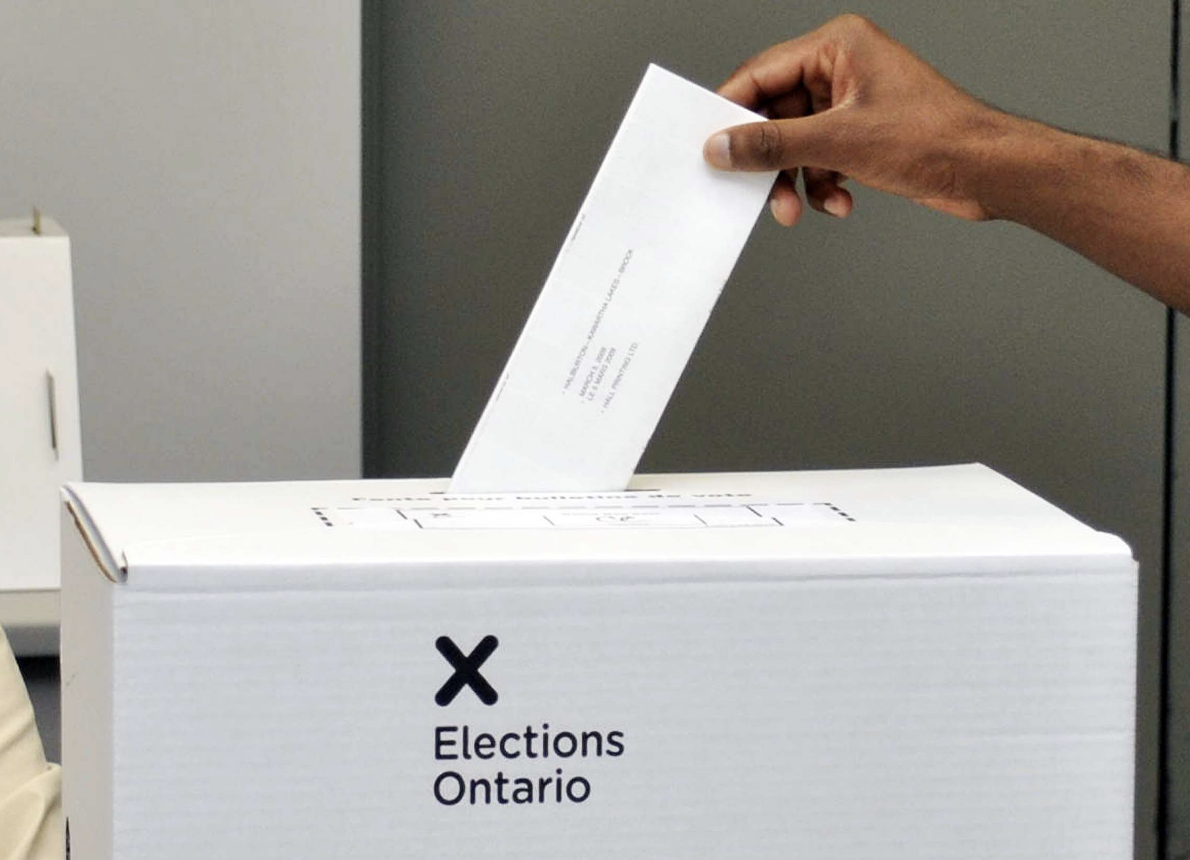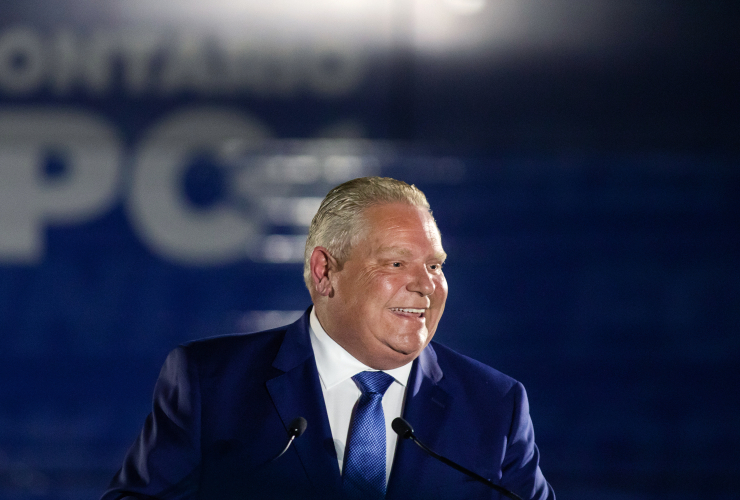Record low voter turnout in Ontario’s election last week could have had something to do with young people not showing up to the polls, but we can’t tell for sure because the province's election authority doesn't collect that information.
Just over 43 per cent of eligible voters cast their ballots on June 2, according to Elections Ontario data, in a vote that sent the majority Progressive Conservative government back to Queen’s Park for four more years under Premier Doug Ford (the party won just over 41 per cent of the votes cast).
Unlike Elections Canada, the provincial election authority doesn’t publish or provide data on voter turnout by age. Elections Ontario instead counts overall turnout by electoral district and otherwise relies on survey data to report on how the voting public engages with its outreach efforts.
Young voters aged 18 to 34 have historically been less engaged than their older counterparts in federal elections, and advocates say they may well have sat out again in the Ontario election.
“We tend to see young people facing significantly more barriers to electoral engagement than older folks, including both motivational and access barriers,” said Samantha Reusch, executive director of Apathy is Boring, noting the historical disparity in voter turnout in both provincial and federal elections.
Voting in the 18- to 24-year-old age group jumped up during the 2015 federal campaign, with more than two-thirds of the eligible population casting votes compared to around 55 per cent in 2011, according to Statistics Canada data. Participation stayed high in the 2019 federal vote and then declined somewhat in 2021.
Overall participation in Ontario's 2018 election — which brought Ford's Progressive Conservatives to power after 15 years of Liberal rule — jumped to 57 per cent after seeing a steady decline since the early 1990s. The only other sub-50 per cent participation rate in an Ontario election was in 2011.
Leaders of youth advocacy groups concede that youth participation may well have shrunk this time, but those working hard to get young voters engaged with the democratic process also say they were thwarted often during the recent provincial election, not least by the inability to fine-tune their own outreach efforts.
"We would love to have access to that type of data to help develop our programming," Reusch said.
Representatives of the province’s student union groups are among those who want to see more data shared in the wake of this election's poor overall voter turnout.
“It is in the public interest to have accurate, riding-by-riding reports produced,” said Mitra Yakubi, the chair of the Canadian Federation of Students Ontario, since it would allow those doing voter education to know who didn't vote and focus their efforts there.
“Students would also like to see firm commitments to have on-campus polling stations during Ontario elections to improve the accessibility for students to vote,” she added.
A spokesperson for the agency said there was on-campus voting at around 20 post-secondary institutions this election, plus four that hosted advance polling. Returning officers consider a range of factors including accessibility, capacity, familiarity and voter convenience when choosing sites, the spokesperson added.
Elections Ontario also ran a voter registration campaign from March until May, hosting more than 50 campus events across the province to encourage students to provide or update their details on the voters list and get information about how to vote, an agency spokesperson said.
While hard evidence remains elusive, there are clues about who did and didn't vote. For example, in Brampton, a young city in the Greater Toronto Area where the Progressive Conservatives took three seats from NDP incumbents for a clean sweep of its five ridings, turnout was even lower than the provincial average, at around 35 per cent.
Democracy Watch, a citizen advocacy group, said the poor overall showing raised questions about the legitimacy of the elected government, which won 83 of 124 seats with the support of just 17.5 per cent of eligible voters.
Duff Conacher, the group’s co-founder, said turnout would likely only meaningfully improve if a string of changes are made to the system, including making it more representative of the popular vote, making it easier for voters to complain about politicians who mislead (and having an ombudsperson to penalize them) and including tougher laws on political ethics, financing, lobbying and other accountability safeguards.
“Voter turnout will go up significantly only if the voting system is changed, if the parties make changes to require everyone in politics to be honest, ethical, open and waste-preventing, and if Elections Ontario does its job properly and informs Ontarians of their right to decline their ballot,” Conacher said.
Morgan Sharp / Local Journalism Initiative / Canada’s National Observer
Editor's note: This article was updated on June 9, 2022 at 12:36pm to show that turnout data for the provincial election was from Elections Ontario, not Elections Canada.
As Duff Conacher, from
As Duff Conacher, from Democracy Watch said, "...turnout would ... improve if [the voting system was] more representative of the popular vote..." In other words, we need proportional representation - as advocated by Fair Vote Canada at this link: https://www.fairvote.ca/ and the grass roots supported Charter Challenge for Fair Voting at this link: https://www.charterchallenge.ca/ NEWS: There's now a new Ontario chapter of support for the Charter Challenge: Simply email [email protected] ....or.... go to http://makevotesequal.blogspot.com/
The Charter Challenge case will be heard first in Toronto likely this year. In the Ontario election 54% of individual voters did not get the "equal treatment" guaranteed by Section 15 of the Charter: Their vote did NOT elect a representative, whereas 46% of voters DID see their vote elect a representative. That is a gross inequality for over half of voters. This is also a violation of Section 3: Our right to vote means that we have to be effectively represented. (Justice Beverley McLachlin)
Join our grass roots supported new Ontario chapter of support for the Charter Challenge: Simply email [email protected] ....or.... go to http://makevotesequal.blogspot.com/






Comments